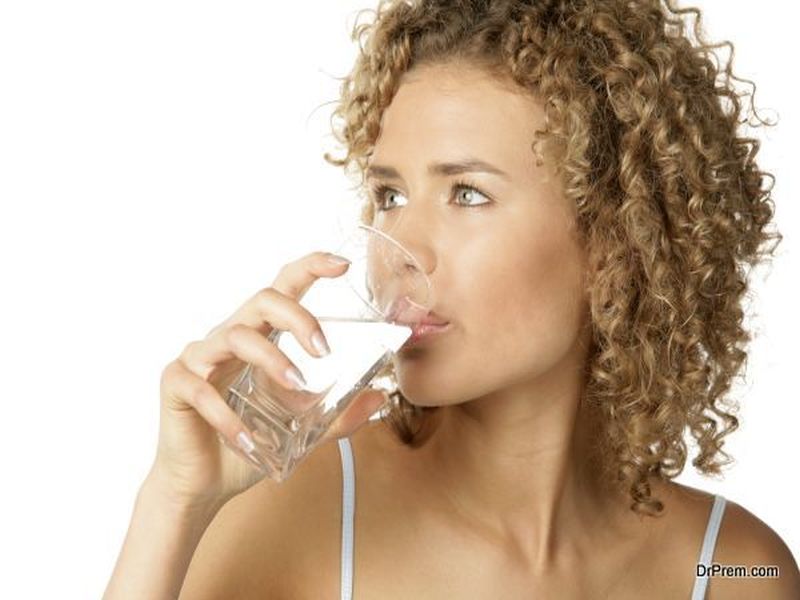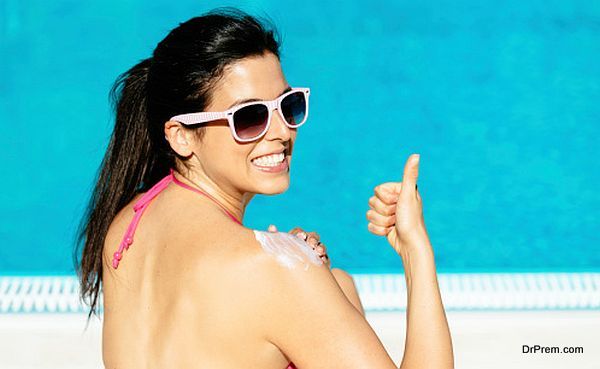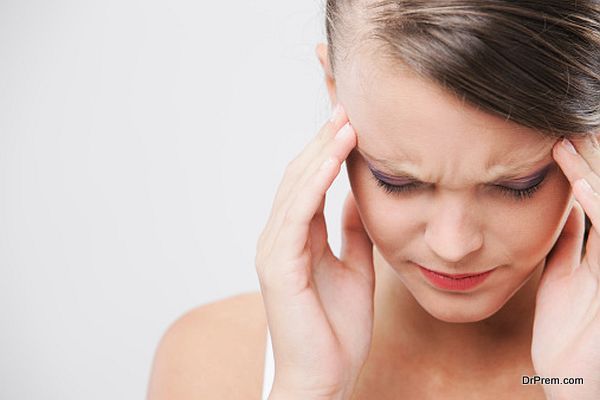Summer means sunshine, time outdoors, swimming, and of course, hot temperatures. But as you prepare for the intense heat of summer, there are some basic health tips to ensure that you and your family remain safe. Check them out.
Hydrate

This is likely the most well-known way to stay safe in extreme heat. Why is hydration so important? Water helps regulate your body temperature and also helps lubricate your joints. Water is also responsible for transporting nutrients to different parts of your body and helping you function at optimum levels.
So why is it so important to hydrate in extreme heat? As we mentioned, hydrating helps maintain your body’s internal temperature. It keeps you cool when outside temperatures are rising. Another way that our body naturally cools off is by sweating. When you sweat, your body releases moisture onto your skin, which then evaporates to cool you off. But the more your body sweats, the more water is released and that water needs replenishing. This is where proper hydration comes into play.
Opinions vary on how much water you should drink in a day, let alone on hot days. It’s advised to keep plenty of water on hand if you plan to be outside in the extreme heat. If you feel yourself sweating profusely or feeling weak or lightheaded, it likely means that you need to hydrate. Other common signs of dehydration are:
- Rapid breathing
- Fatigue
- Dizziness
- Rapid heartbeat
- Lack of urination
If you notice any or all of these symptoms, take a seat, find a shaded area, and drink at least 8 ounces of water. Monitor your condition before returning to the heat.
Seek Out Shade
Finding relief in the heat means finding a shaded area shielded from the sun. But it’s never a good idea to wait until you’re in need of shade to find it. Before choosing a location to spend your hot summer day, make sure the area offers shade. Shade can come in the form of a large tree, gazebo, or even an umbrella or canopy you bring from home.
Exposure to direct sunlight for extended periods of time can result in sunburn, sun poisoning, heat exhaustion, heat stroke, heat rash, and damage to your eyes. When you feel your core temperature increasing, it’s a sign to seek out shade, which will not only cool you off but provide your skin with a much needed break from the sun’s direct light.
Use Sunscreen

Another great way to protect yourself from the sun is by applying sunscreen. And this doesn’t just hold true for the summer months. You should apply sunscreen any time you venture outside. The sun’s UV rays can penetrate through clouds and clothing. If you’re spending time on the water, ice, or any other reflective surface, sunscreen is a must! The sun’s rays will reflect off of these surfaces, intensifying their effects.
It’s important to choose a sunscreen that protects against both UVA and UVB rays with an SPF of 15 or higher. UVA rays are those that penetrate into the skin’s deepest layers, known as the dermis. UVB rays usually affect the more superficial, surface layer of your skin but is also attributed to skin cancer.
Applying sunscreen to all exposed skin before venturing outdoors and reapplying every two hours will help protect your skin from sun damage. If you plan to swim or get wet, invest in water proof sunscreen that will keep you protected during water play.
Wear Proper Clothing
Wearing additional clothing is likely the last thing you want to do when faced with extreme temperatures. But wearing long sleeved shirts, hats, and other protective clothing can actually help keep you cool and safe in the heat.
The best type of clothing to wear when outdoors in the summer is light-colored, loose fitting, and lightweight materials. This means long, loose sleeved shirts in light colors like white or tan. Avoid dark colors that will absorb the sun’s rays. Tight clothing is also more likely to trap heat into your skin, causing your body temperature to rise. Hats are a great way to protect your head, face, and neck from the sun. Find a hat with a wide brim or flaps that cover your exposed skin. Some hats even offer UV protection in the material themselves.
Sunglasses are another important accessory for sun protection. Even on a cloudy day, overexposure to sunlight can cause a long list of complications for your eyes. These include:
- Irritation/Redness
- Blurry vision
- Cancer of the eyelids
Sunglasses can actually block between 99% and 100% of UVB and UVA radiation so they are a stylish and wise choice for protecting yourself from sun damage.
Know the Warning Signs

If you find yourself exposed to extreme heat for an extended period of time and are concerned that you may be experiencing the effects of some heat related complications, here are some warning signs.
Heat Rash
Heat rash is the result of blocked or clogged sweat ducts. The rash appears as blisters or red lumps on the skin and may also feel itchy and irritated. The good news is that most forms of heat rash clear up on their own. Intense or serious cases may need medical attention. The best way to treat heat rash is to limit your body’s perspiration and keep the skin clean and cool.
Heat Exhaustion
Heat exhaustion occurs after working or playing for too long or too hard in the extreme heat. Heat exhaustion can also result from dehydration or excessive perspiration. Here are some of the most common symptoms and warning signs associated with heat exhaustion.
- Dizziness
- Muscle cramps
- Weakness
- Sweating/Cold clammy skin
- Nausea/Vomiting
If you’re experiencing any of these symptoms, you need to find shade immediately, drink water, remove tight or heavy clothing, and lay the person down and elevate their legs.
Heatstroke

Heatstroke is one of the most serious ways your body reacts to overexposure to heat. Heat stroke can leave a victim unconscious and even be fatal. Heatstroke sets in when a victim’s internal temperature reaches 104 degrees.
If you or someone you know is suffering from heatstroke, you need to seek immediate medical attention. Prolonged heat stroke symptoms can result in damage to a person’s internal organs, brain, and muscles. Here are some warning signs to look out for:
- Headache
- Rapid heart beat
- Altered mental state
- Flushed skin
- Nausea/Vomiting
- Rapid breathing
Play Smart
If you plan to work or play outdoors in the extreme heat, you need to do so safely. Understanding how to protect yourself is step number one. It’s also important to recognize the signs and symptoms of heat related illnesses. This will prepare you to act fast and potentially, save a life.
Article Submitted By Community Writer




